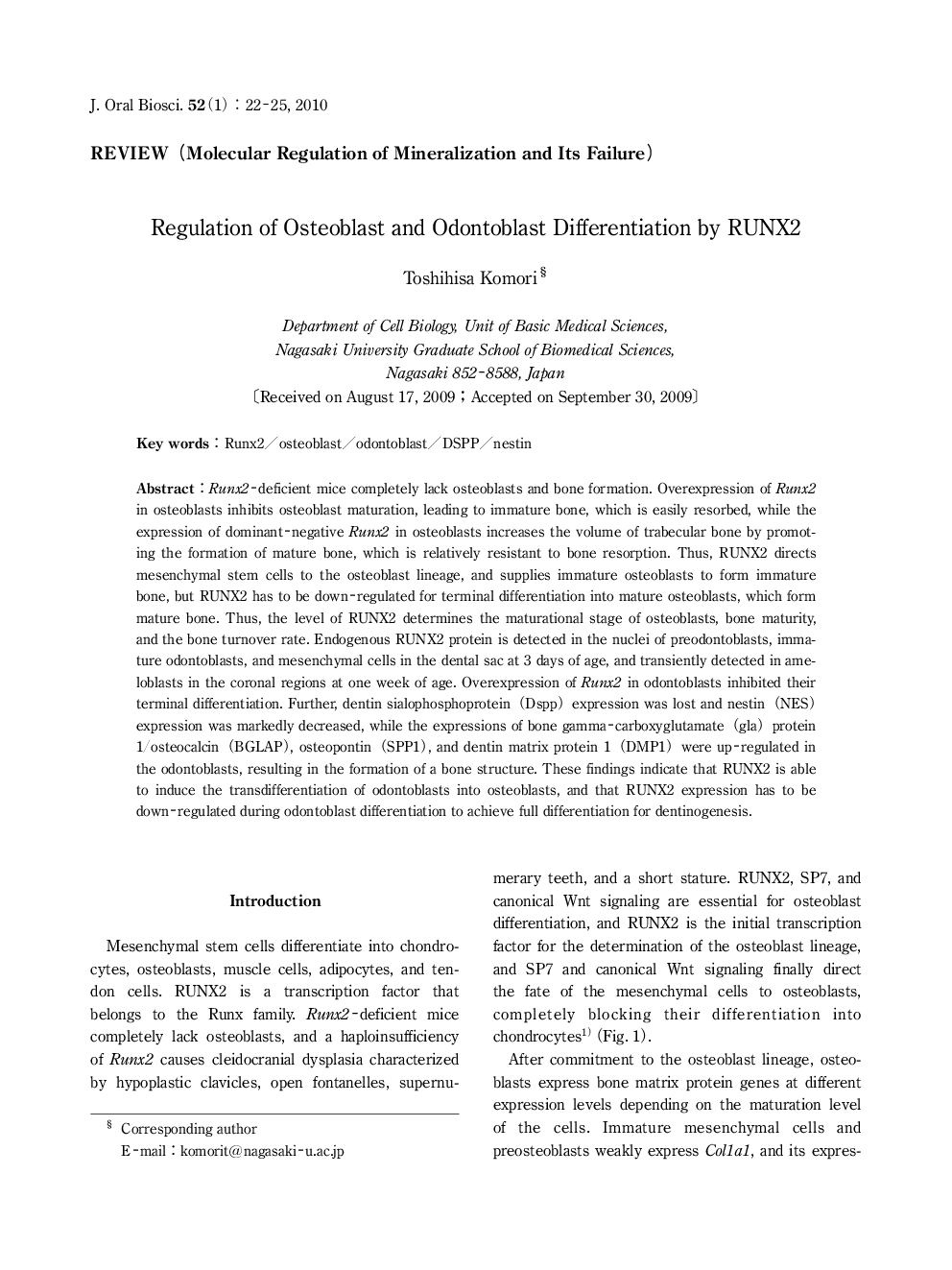| Article ID | Journal | Published Year | Pages | File Type |
|---|---|---|---|---|
| 2776941 | Journal of Oral Biosciences | 2010 | 4 Pages |
Runx2-deficient mice completely lack osteoblasts and bone formation. Overexpression of Runx2 in osteoblasts inhibits osteoblast maturation, leading to immature bone, which is easily resorbed, while the expression of dominant-negative Runx2 in osteoblasts increases the volume of trabecular bone by promoting the formation of mature bone, which is relatively resistant to bone resorption. Thus, RUNX2 directs mesenchymal stem cells to the osteoblast lineage, and supplies immature osteoblasts to form immature bone, but RUNX2 has to be down-regulated for terminal differentiation into mature osteoblasts, which form mature bone. Thus, the level of RUNX2 determines the maturational stage of osteoblasts, bone maturity, and the bone turnover rate. Endogenous RUNX2 protein is detected in the nuclei of preodontoblasts, immature odontoblasts, and mesenchymal cells in the dental sac at 3 days of age, and transiently detected in ameloblasts in the coronal regions at one week of age. Overexpression of Runx2 in odontoblasts inhibited their terminal differentiation. Further, dentin sialophosphoprotein (Dspp) expression was lost and nestin (NES) expression was markedly decreased, while the expressions of bone gamma -carboxyglutamate (gla) protein 1/osteocalcin (BGLAP), osteopontin (SPP1), and dentin matrix protein 1 (DMP1) were up-regulated in the odontoblasts, resulting in the formation of a bone structure. These findings indicate that RUNX2 is able to induce the transdifferentiation of odontoblasts into osteoblasts, and that RUNX2 expression has to be down-regulated during odontoblast differentiation to achieve full differentiation for dentinogenesis.
